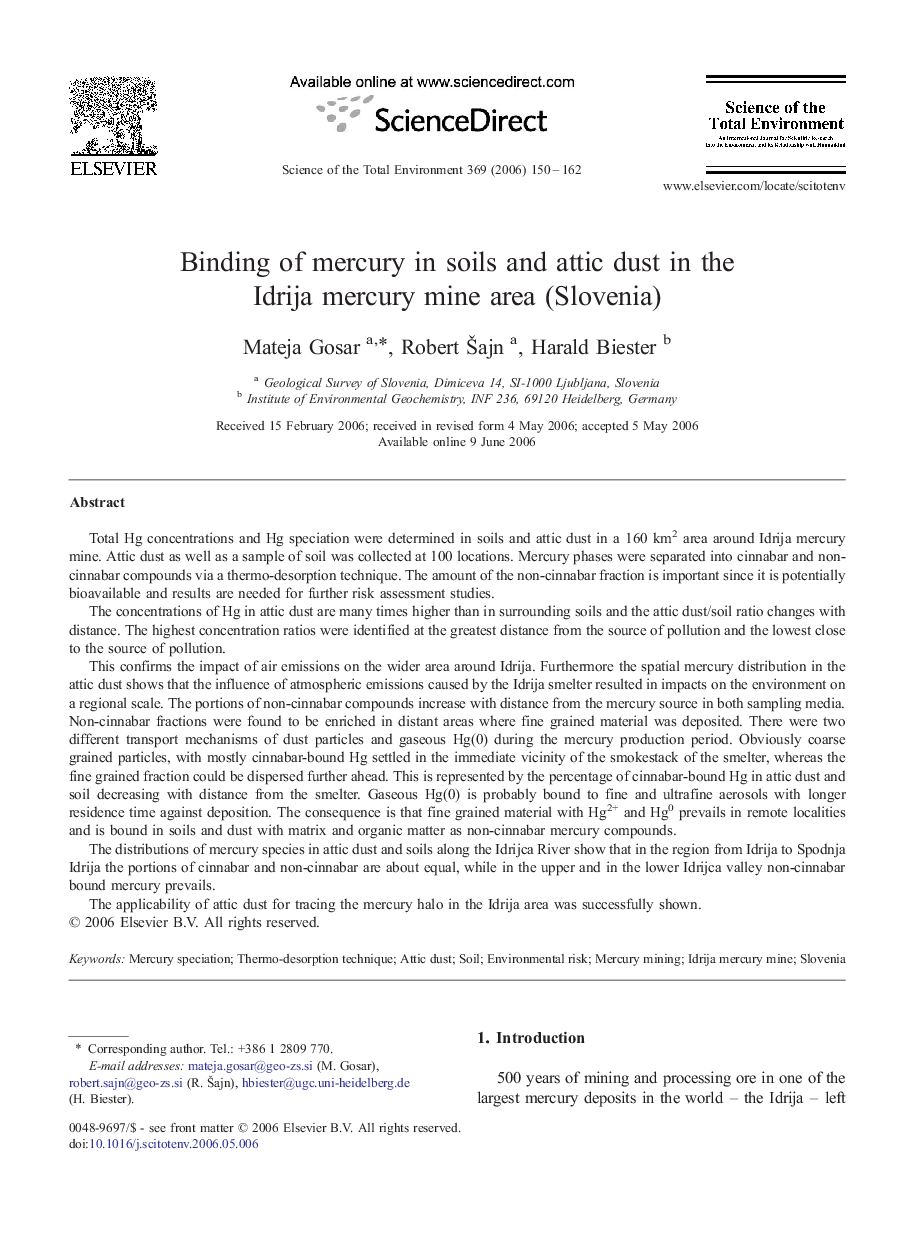| Article ID | Journal | Published Year | Pages | File Type |
|---|---|---|---|---|
| 4433948 | Science of The Total Environment | 2006 | 13 Pages |
Total Hg concentrations and Hg speciation were determined in soils and attic dust in a 160 km2 area around Idrija mercury mine. Attic dust as well as a sample of soil was collected at 100 locations. Mercury phases were separated into cinnabar and non-cinnabar compounds via a thermo-desorption technique. The amount of the non-cinnabar fraction is important since it is potentially bioavailable and results are needed for further risk assessment studies.The concentrations of Hg in attic dust are many times higher than in surrounding soils and the attic dust/soil ratio changes with distance. The highest concentration ratios were identified at the greatest distance from the source of pollution and the lowest close to the source of pollution.This confirms the impact of air emissions on the wider area around Idrija. Furthermore the spatial mercury distribution in the attic dust shows that the influence of atmospheric emissions caused by the Idrija smelter resulted in impacts on the environment on a regional scale. The portions of non-cinnabar compounds increase with distance from the mercury source in both sampling media. Non-cinnabar fractions were found to be enriched in distant areas where fine grained material was deposited. There were two different transport mechanisms of dust particles and gaseous Hg(0) during the mercury production period. Obviously coarse grained particles, with mostly cinnabar-bound Hg settled in the immediate vicinity of the smokestack of the smelter, whereas the fine grained fraction could be dispersed further ahead. This is represented by the percentage of cinnabar-bound Hg in attic dust and soil decreasing with distance from the smelter. Gaseous Hg(0) is probably bound to fine and ultrafine aerosols with longer residence time against deposition. The consequence is that fine grained material with Hg2+ and Hg0 prevails in remote localities and is bound in soils and dust with matrix and organic matter as non-cinnabar mercury compounds.The distributions of mercury species in attic dust and soils along the Idrijca River show that in the region from Idrija to Spodnja Idrija the portions of cinnabar and non-cinnabar are about equal, while in the upper and in the lower Idrijca valley non-cinnabar bound mercury prevails.The applicability of attic dust for tracing the mercury halo in the Idrija area was successfully shown.
